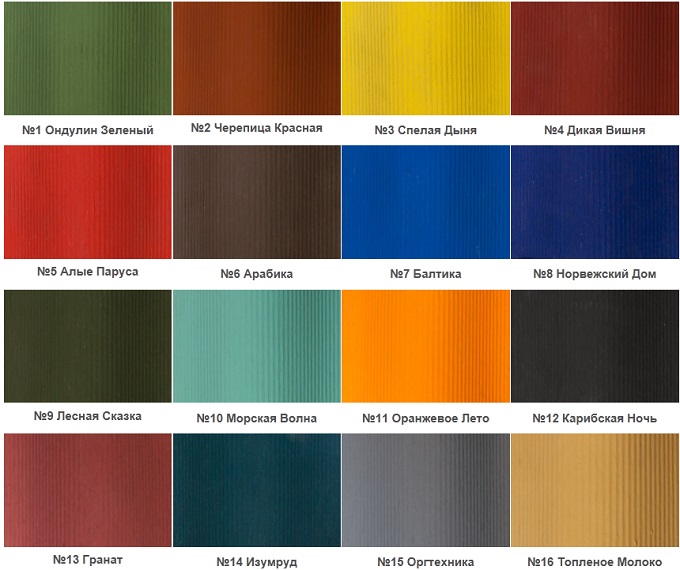Rubber paint for concrete for outdoor use
The outer surface of concrete structures, in addition to its unattractive "gray" appearance, is exposed to the aggressive effects of a number of factors: temperature changes, wind, frost, snow, exposure to reactive gases and liquids, impacts and abrasion loads. Therefore, the concrete surface is protected in various ways, including rubber paint.
Features of rubber paint for concrete
This material is a representative of a new generation of finishing and protective materials, which includes the following components:
- Acrylate latex;
- Organic solvent coalescent;
- Water;
- Color color;
- Antifungal and antifreeze additive.
Rubber coating on concrete is 100% safe for others, both at the stage of application and throughout the entire period of operation. The paint film does not change the mechanical properties of the base and is applied using a multi-layer technology. The average cost of one kilogram of rubber paint is in the range of 130-200 rubles, depending on the packaging capacity and manufacturer.
Thus, surfaces treated with rubber paint acquire an aesthetically attractive appearance, are not afraid of harmful atmospheric factors, and are not affected by fungi and moss.

In addition, rubber paint inhibits the appearance of cracks and shells, and also allows the walls to "breathe". Due to its zero toxicity, outdoor concrete rubber can be used indoors.
Rubber paint for concrete for outdoor use has the following average technical characteristics:
- Specific gravity - 1, 1 kilogram in 1 liter;
- The average drying time “to touch” is from 0.5 to 1 hour;
- Complete drying - 12 hours;
- Extensibility of the film - up to 400 percent;
- Permissible temperature limits of operation - from 60 to minus 50 degrees Celsius (sometimes from 200 to minus 100 degrees Celsius);
- The average service life of the coating is 10 years;
- Zero self-ignition and 100% resistance to UV rays from the sun.
Application area
Rubber coating for concrete is used for finishing and repairing external and internal concrete surfaces (facades of buildings and structures, ramps, parking entrances, inclined entrances, walls, etc.), brick, gypsum, wood, plaster (except for whitewashed surfaces), asphalt concrete and ceramic tiles.
The technology of applying paint to a concrete surface
- Thorough cleaning of the base: removal of grease stains, dirt, remnants of the old coating. In this case, the coating with oil or alkyd paint, as well as whitewashing, is completely removed;
- Washing the base with a solution of sodium phosphate or water;
- Careful sealing of cracks, sinks, removal of material flows;
- Easy grinding with subsequent dedusting of the surface;
- Primer with deep penetration composition. Metal elements are painted separately, and porous or cellular concretes are primed with at least two layers;
- Thorough drying of the base;
- Application of the first thin layer of rubber paint in any convenient way;
- Drying;
- Application of the second and third layers in the interval between application of 2-3 hours.
- When planning outdoor work, weather conditions must be taken into account. The application of rubber paint is allowed at an ambient temperature of at least 5 degrees Celsius;
- The surface that is exposed to high humidity or water, in addition to priming, is additionally treated with a hydrophobic composition;
- During the dyeing process, the rubber composition must be periodically mixed;
- After finishing work, the tool is immediately washed with clean water.
Popular foreign and domestic brands. Table
| Brand | Characteristic | Average consumption for a single-layer coating 1 m2 |
| Tikkurila Novasil, Finland | Forms a semi-gloss film with high adhesion to the base, reliably protecting concrete from moisture. Recommended for exterior facades | 0.17-0.25 kg |
| Superdecor VD-AK-103, Russia | The film has excellent water repellency and abrasion resistance. | 0.25 kg |
| Prosvet Russia | The film has water-repellent properties and increased resistance to harmful atmospheric factors. Recommended for outdoor restoration work | 0.25 ag |
| Rezolux Universal Russia | The film restrains cracking of the base to a depth of 1.5 mm, repels dust and other contaminants, and withstands vibration and alkaline environment well. Recommended for restoration work | 0.2 kg |
| Optimist, Russia | Gives a highly elastic, vapor-permeable, wear-resistant film. Recommended for outdoor work | 0.2 kg |




